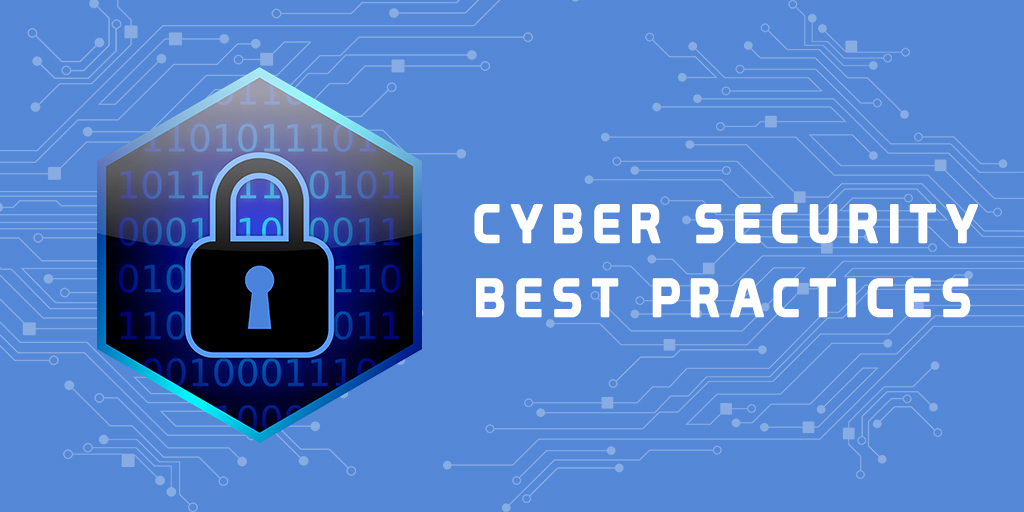In today's digital landscape, cybersecurity best practices play a crucial role in safeguarding sensitive information and maintaining the integrity of digital assets. As cyber threats continue to evolve, organizations must stay ahead by implementing robust security measures. This guide delves into the key aspects of cybersecurity best practices, offering insights and strategies to enhance your cyber defense.
Overview of Cybersecurity Best Practices
Cybersecurity best practices are a set of guidelines and protocols designed to protect digital assets from cyber threats and attacks. These practices are essential for organizations to safeguard sensitive information, maintain the integrity of their systems, and ensure the confidentiality of data.
Importance of Cybersecurity Best Practices
Cybersecurity best practices play a crucial role in preventing cyber threats by establishing a strong defense mechanism against malicious activities. These practices help in identifying vulnerabilities, implementing security controls, and responding effectively to cyber incidents.
- Regularly updating software and systems to patch security vulnerabilities.
- Implementing strong password policies and multi-factor authentication to secure access.
- Conducting regular security training and awareness programs for employees.
- Backing up data regularly to prevent data loss in case of a cyber attack.
Network Security
Network security plays a crucial role in cybersecurity best practices as it focuses on protecting the integrity, confidentiality, and availability of data transmitted over a network. By implementing robust network security measures, organizations can prevent unauthorized access, data breaches, and other cyber threats.
Encryption
Encryption is a vital method used to secure networks by converting data into a secure format that can only be accessed with the proper decryption key. By encrypting sensitive information, such as passwords, financial data, and communications, organizations can ensure that even if data is intercepted, it remains unreadable to unauthorized parties.
Firewalls
Firewalls act as a barrier between a trusted internal network and untrusted external networks, filtering incoming and outgoing network traffic based on predetermined security rules. By setting up firewalls, organizations can block malicious traffic, prevent unauthorized access, and monitor network activity to identify potential threats.
Intrusion Detection Systems (IDS)
Intrusion Detection Systems (IDS) are tools that monitor network traffic for suspicious activities or potential security breaches. IDS analyze network packets and log events to detect and respond to malicious behavior in real-time. By deploying IDS, organizations can promptly identify and mitigate security incidents before they escalate.
Data Protection
Data protection is a critical aspect of cybersecurity best practices, aiming to safeguard sensitive information from unauthorized access, use, or disclosure. By implementing robust data protection measures, organizations can mitigate the risk of data breaches, financial losses, and reputational damage.
Secure Data Storage
- Utilize encryption techniques to secure data at rest, preventing unauthorized access to stored information.
- Implement access controls and authentication mechanisms to restrict data access to authorized personnel only.
- Regularly update security patches and software to address vulnerabilities and protect data from cyber threats.
Secure Data Transmission
- Use secure communication protocols like HTTPS or VPNs to encrypt data during transmission over networks.
- Avoid public Wi-Fi networks for transmitting sensitive data and opt for secure, private networks instead
.
- Employ email encryption tools to protect confidential information shared via email communication.
Secure Data Disposal
- Adopt proper data disposal practices by securely erasing data from devices before discarding or repurposing them.
- Shred physical documents containing sensitive information to prevent unauthorized retrieval or misuse.
- Implement data retention policies to determine the appropriate time frame for retaining and disposing of data securely.
Employee Training and Awareness
Employee training plays a crucial role in implementing cybersecurity best practices within an organization. By educating employees on the importance of cybersecurity and providing them with the necessary knowledge and skills, businesses can significantly reduce the risk of cyber threats and attacks.Raising awareness about potential cyber threats among employees is essential to create a security-conscious culture within the organization.
When employees are aware of the various cyber threats that exist, such as phishing scams, malware, and social engineering attacks, they are better equipped to identify and respond to suspicious activities.
Training Programs
- Regular cybersecurity training sessions for all employees, focusing on topics such as password security, email phishing awareness, and safe internet browsing practices.
- Simulated phishing exercises to test employees' ability to recognize and report phishing emails, helping them develop a vigilant mindset.
- Hands-on workshops and interactive training modules to engage employees and reinforce cybersecurity best practices in a practical manner.
Awareness Campaigns
- Distributing cybersecurity newsletters or emails with tips and updates on the latest cyber threats to keep employees informed and educated.
- Displaying posters or digital screens with cybersecurity reminders and best practices in common areas to serve as constant visual reminders for employees.
- Organizing cybersecurity awareness events, such as lunch and learn sessions or webinars, to promote a culture of cybersecurity awareness and collaboration among employees.
Incident Response and Management
Having an incident response plan in place is crucial for effectively managing cybersecurity incidents. This plan Artikels the steps to be taken in case of a breach or attack, helping organizations respond promptly and minimize potential damage.
Importance of Incident Response Plan
An incident response plan ensures a coordinated and timely response to cyber incidents, reducing the impact on business operations and data security. It helps in identifying the root cause of the incident, containing the threat, and restoring normal operations swiftly.
- Establishing clear roles and responsibilities for incident response team members
- Defining communication protocols for notifying stakeholders and relevant authorities
- Documenting incident details, actions taken, and lessons learned for future prevention
Successful Incident Response Strategies
Implementing effective incident response strategies can significantly reduce cyber risks and protect organizational assets. For example, conducting regular incident response drills and simulations can help teams practice their response procedures and identify areas for improvement.
"A proactive and well-prepared incident response plan can save organizations time, money, and reputation in the event of a cyber incident."
- Engaging with cybersecurity experts and leveraging threat intelligence for early detection
- Utilizing automated incident response tools for rapid threat containment and mitigation
- Engaging legal counsel and forensic experts to investigate the incident thoroughly
Last Point
By adopting the cybersecurity best practices Artikeld in this guide, organizations can fortify their defenses against malicious cyber activities, ensuring data protection and operational continuity. Stay vigilant, stay informed, and stay secure in the ever-changing realm of cybersecurity.
Popular Questions
How often should data backups be performed?
Data backups should be performed regularly, ideally on a daily basis, to ensure minimal data loss in the event of a cyber incident.
What are some common signs of a potential cyber threat?
Common signs include unusual network activity, unauthorized access attempts, and unexplained system slowdowns or crashes.
Why is employee training crucial for cybersecurity?
Employee training is essential as it helps create a security-conscious culture, reduces human errors, and enhances overall cyber resilience within an organization.







